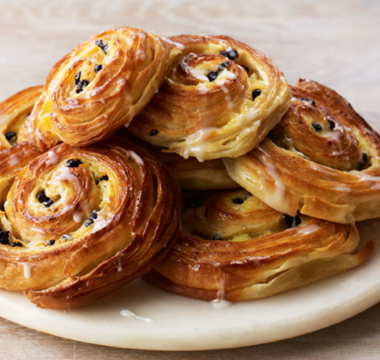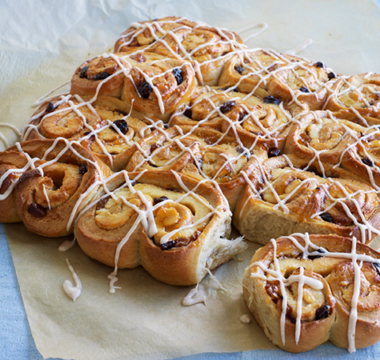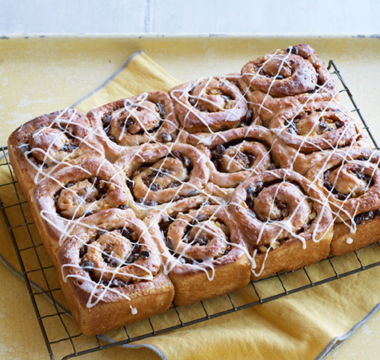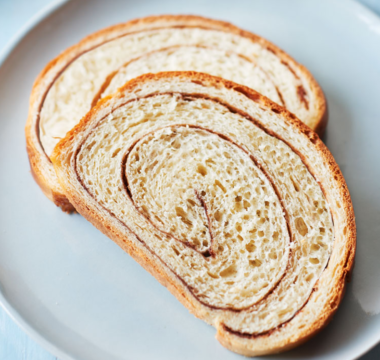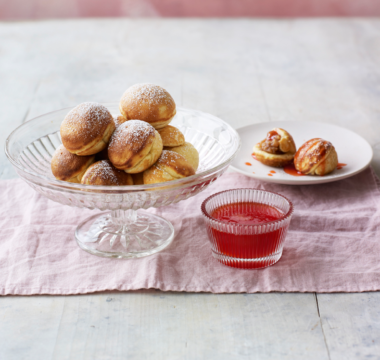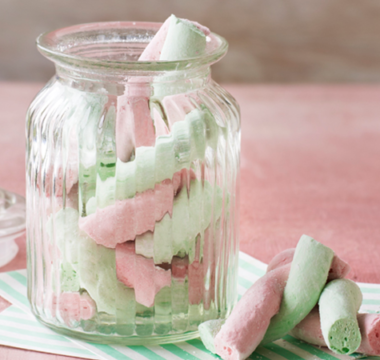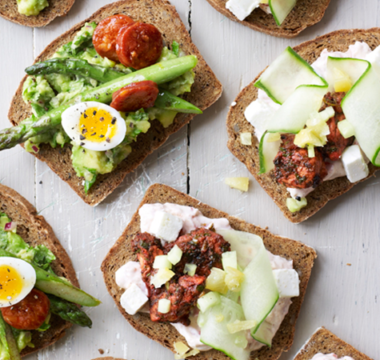We’ve made two classic Danish pastry shapes with this dough, so you can really show off your skills!
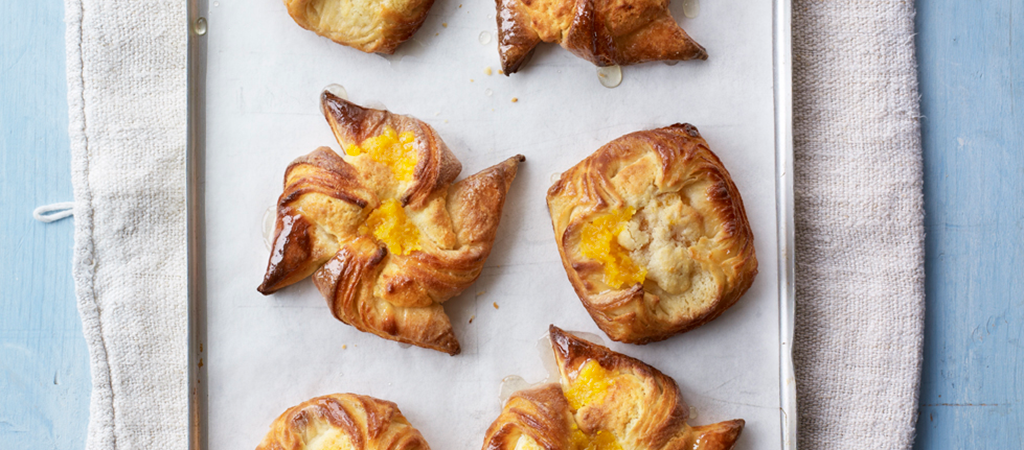

Ruby
Series 9
- Ingredients
- Method
Method
Step 1
Place the flour, salt, sugar and yeast in the bowl of a stand mixer fitted with the dough hook. Put the milk and vanilla in a small pan over a low heat and heat until just warm to the touch.
Step 2
Add the milk mixture to the bowl with the flour mixture, along with 2 of the eggs and the cool water and mix on a slow speed for 2 minutes, then on a medium speed for 6 minutes, to form a soft dough.
Step 3
Tip out the dough onto a lightly floured worktop and shape into a ball. Dust the ball with flour, put it into a clean plastic bag and chill it for 30 minutes.
Step 4
Meanwhile, make the frangipane. Put the butter and sugar in the clean bowl of a stand mixer fitted with the beater attachment and beat for about 5 minutes, until fluffy and light.
Step 5
Add the eggs and 1 tablespoon of flour and mix well for a few minutes, then add the remaining flour and all the other ingredients. Combine thoroughly and set aside.
Step 6
Make the purée. Pulse the apricots with the orange juice in a food processor, to a thick paste.
Step 7
Place the chilled slices of butter for the dough side by side between the 2 sheets of baking paper. Roll out the butter between the paper until it forms a single slab about 3mm thick and almost as large as the sheets of paper. Leave it between the paper and place it in the freezer for 10 minutes.
Step 8
Dust the worktop with flour and roll out the chilled dough to a rectangle measuring about 50 x 20cm and about 1cm thick.
Step 9
Peel one sheet of baking paper away from the frozen slab of butter. Lay the exposed side neatly onto the dough so that it comes almost to the edges and leaves one third of the dough uncovered. Rub the top and peel off the uppermost baking paper sheet.
Step 10
Fold the exposed dough at the top down over half of the butter. Gently score a line down the butter and fold the bottom half of the dough up.
Step 11
Pinch the open edges lightly to seal in the butter. Put the dough back in the plastic bag and freeze again for 15 minutes.
Step 12
Place the chilled dough on a lightly floured worktop with one short end closest to you. Roll it out to a rectangle measuring about 50 x 20cm, as before. Repeat the folding, as if folding an A4 letter, and place the dough back in the freezer for another 15 minutes. Repeat this rolling and folding one more time.
Step 13
Cut the dough in half across its narrow width. Roll out one half on a lightly dusted worktop to a 30cm square and about 6mm thick. Trim the edges and cut the dough into 10cm squares (you should have 9 squares in total), then roll each square a little larger.
Step 14
Place 1 teaspoon of apricot purée on each square and top with 1 teaspoon of almond paste. Pull each corner of the square into the middle and press firmly down.
Step 15
Roll out the second piece of dough as in Step 13, cutting it into squares as before. This time, make a diagonal cut from each corner about 2cm in towards the centre. Add 1 teaspoon each of the apricot purée and the frangipane, as before.
Step 16
Lift 1 cut corner of the dough to the centre and press down well. Repeat with the other corners to make 9 windmill shapes.
Step 17
Transfer all the pastries to the baking trays and cover with oiled cling film. Leave to rise for about 45 minutes, until doubled in size. Heat the oven to 220°C/200°C fan/ 425°F/Gas 7.
Step 18
Bake the pastries for about 15–20 minutes, or until golden brown and risen. (Cover the pastries with foil for the last 5 minutes, if they look like they are over-browning.)

